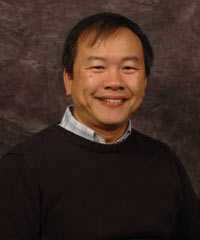Incorporating the public affairs mission into a classroom setting can often seem daunting and overly complicated. It’s a call that many faculty wish to heed, but are unsure of how they might structure it correctly. Dr. Shyang Huang, a professor in the Department of Physics, Astronomy and Materials Science, recently proved that the simplest explanation is often the best by developing a course-specific approach for embedding public affairs in his physics classroom.

Physics and Public Affairs? Yes
When asked how to approach the process, Dr. Huang had this to say: “I never attempted to teach public affairs per se, because public affairs are not in the catalog description of any of our courses. However, when I realized that two of the three themes (community engagement and cultural competence) when cast in the light of a service-oriented attitude, are the motivation for a liberal arts education, I became convinced that there is a logical way of integrating public affairs into regular teaching.”
Dr. Huang is a returning submitter and reviewer in the Quality Initiative Project, a public affairs assessment where student work is evaluated regarding the strength of overall connection with public affairs. Reviewers utilize a scoring guide, listing the attributes of the public affairs pillars alongside a series of levels measuring the depth of knowledge. The scoring guide starts with ethical leadership, moves into cultural competency, and concludes with civic engagement.
Modifying the Scoring Guide
Dr. Huang used his summer introductory physics classes as an opportunity for students to reflect on their place in society from a public affairs perspective. He reasoned that because many of his students were likely to move into medical fields, a new approach was required to engage the desirable depth of thought. Dr. Huang used the structure already provided by the scoring guide to develop the questions for his students, but then he got creative with it, working backwards to provide a socially-minded context in regards to student responses:
Scoring Guide: Ethical Leadership ➢ Cultural Competency ➢ Civic Engagement
Dr. Huang: Civic Engagement ➢ Cultural Competency ➢ Ethical Leadership
“I started with community engagement, because self-awareness is a human nature, and that is the basis of a productive, service-oriented engagement,” he explains. “This is then followed by cultural competence, which grows out of self-awareness and, when mastered, is manifested in class mobility. I then follow up with ethical leadership, which one must exercise as he/she overcomes cultural/class barriers and moves up the ladder in the community.”
In brief, Dr. Huang has established a precedent for teaching the three pillars, but doing so in a way that remains conducive to the learning goals of his classroom.
What Backwards Thinking Produced
Dr. Huang engaged his students by asking for personal experiences, anecdotes, stories from the news and even using popular films to illustrate ethical dichotomies. Student responses were vastly different, each drawing on unique experiences as support. These student responses were submitted for inclusion in the Quality Initiative Project: Public Affairs Assessment.
So how is this level of engagement achieved in other disciplines? Dr. Huang challenges faculty interested in incorporating public affairs concepts in a variety of disciplines with a series of questions focused on student goals from a social evolutionary/anthropological perspective. In other words, how will the course material prepare students for social “survival,” or the ability to achieve success among their peers after graduation:
- “What’s on (the student’s) mind? Why are they taking your class? What role does your class play in his/her strategy of survival?”
- “What happens after survival? (Class mobility)”
- “What then does it take? (Cultural competence and ethical leadership)”
The answer to the questions is sure to be diverse, but eventually the apex of learning should lead to a strong sense of community engagement, the final pillar on the list. Dr. Huang hopes that his students will be prepared to perform highly in their communities after applying the skills from their fields with a vast array of prior thinking about public affairs leadership.
